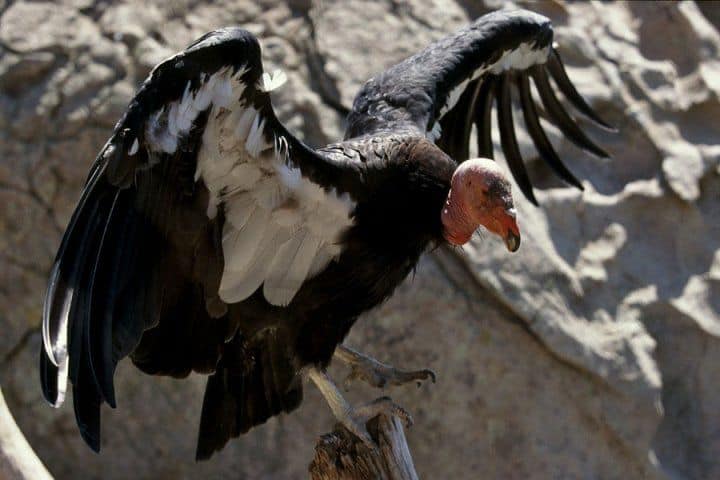Sequencing the Condor Genome for Insights into Human Diversity

California condors have the starring role in one of the nation’s greatest conservation success stories, fruitfully returning to the wild after nearly going extinct in the 1980s. A team of researchers at UC San Francisco have recently sequenced the condor genome, shining light on the species’ history and opening the door to a better understanding of genomics in small populations, for the benefit of both condors and humans.
“We’re interested in the interplay between small population size, inbreeding, harmful genetic variation, and disease,” said Jeff Wall, PhD, MS, a professor of epidemiology and biostatistics in UCSF’s Institute for Human Genetics and senior author on the study. “We’re digging into this deeply because we’d like to quantify the genomic consequences.”
By sequencing the genome and comparing between individuals, the team discovered that a surprising amount of diversity still exists among condors, despite the current population of about 520 having arisen from only 22 individuals. This diversity shows that condors once had a population size on the order of tens of thousands and that the diversity that was built up in the past has been preserved. The findings appeared May 13 in Current Biology.
“That’s a hopeful sign,” said Jacqueline Robinson, PhD, a post-doctoral researcher in Wall’s lab and lead author on the study. “It suggests that the condors can adapt to changing conditions, and bodes well for their success in the wild.

Wall’s work aligns with the emerging field of conservation genomics, in which knowing the genome of a species opens the door to an array of conservation efforts. For example, captive condors with complementary genomes can be paired to enhance diversity and avoid the impacts of deleterious mutations. In wild populations, researchers may be able to track evolutionary genomic changes in the future by simply gathering feathers to obtain genetic samples.
In addition, he said, studying genomics across species with small populations helps conservationists elucidate the limits of efforts to reverse the process of extinction in endangered species.
But the real reason Wall is studying the genome of an endangered raptor is less about the ecological stakes and more about its potential to tell us something about our own population genetics.
“We use many of the same methods to follow harmful genetic variation in condors as we do in humans,” said Wall, who has also investigated population genomics in the threatened spotted owl and groups of primates, as well as in populations of Han Chinese and Aboriginal Australian groups. “There’s a direct correlation between the research we’re doing on birds and on people.”
The advantage of condors, said Wall, is that it’s possible to analyze differences between individuals in a larger proportion of the group and to follow genetic variation over generations. What we learn from that analysis can apply to both endangered species and humans.
“By getting an idea of how prevalent inbreeding is in nature and its relation to levels of diversity, we get some perspective on how to look at the patterns we see in humans,” Robinson said.
Understanding those patterns in humans is important, said Wall, because in large parts of the world, cultural and religious practices lead to closed groups of people who marry one another, even though they may be related.
“We know those practices lead to increased incidence of disease,” said Wall. “We’d like to be able to put numbers to that, to identify the mutations causing these diseases and maybe be able to make predictions that can be beneficial to those people.”
from ScienceBlog.com https://ift.tt/3sizgxE
Comments
Post a Comment